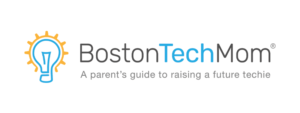Empow Studios promotes learning through electronic contraptions and devices
Opening the top of a ceramic jar is not typically considered an exciting endeavor. However, at a recent electronics demonstration at Empow Studios in Lexington, it was met with some apprehension and laughs.
“Go ahead and open it,” said Empow senior instructor Pallavi Naravane to a student, who carefully lifted the lid of what looked like an average cookie jar.
“That’s weird!” remarked the student with lid in hand, as the cookie jar sent out a spooky sound. The light-sensing alarm system in the jar was meant to drive away potential cookie thieves.
“Pranking gadgets are popular,” says Naravane, who leads Empow’s DIY (Do It Yourself) Electronics Club on Saturdays. “There are alarm gadgets to catch the cookie thief, spy cameras to go undercover, intrusion alarms for kids’ hideouts. There are everyday devices: kids can make a fan turn on when it gets hot, make a coffee stirrer, or gadgets to detect when plants need watering. There are also creative applications like light-up cards and audio cards. It’s fun to make a project like a Halloween pumpkin that lets out eerie tunes when someone approaches.”
Naravane notices that the immediate results are a big draw. “Children are hooked when they realize that this is tangible and gadgets can be fun and can be used now, and not something they have to plan for in the future when they go to college,” she notes.
Exploring the Electronics Landscape
“There are light sensors, motion sensors, and sound sensors,” says Naravane as she shows small circuit boards and attachments to the students.
For Empow’s DIY Electronics Club, Naravane is focusing on the many possibilities and practical uses of electronics using Arduino based projects. Arduino is an open-source platform consisting of a programmable circuit board (microcontroller) and a piece of software or IDE (integrated development environment). It relies on simplified C++ code, which is uploaded to a computer using a USB cable.
Naravane, who also teaches the Advanced Robotics Club on Saturdays in Lexington, thinks of the Arduino electronics experience as an extension of robotics.
“Students will connect electronics parts like resistors, LED’s, and photoresistors by reading schematics much like reading LEGO Mindstorms assembly instructions,” says Naravane. “Then we program the Arduino much like programming the EV3 robot.”
While the DIY Electronics Club students start off with basic electronics and Arduino programming, the electronics lessons that are part of the Empow Studios STEM After School Club (ASC) begin with circuit simulation with TinkerCAD Circuits, physically building the simulated circuit on a breadboard, Scratch programming for Arduino, then progress to Arduino Kit projects and full Arduino IDE.
“Arduino projects will include controlling various LED lights and LCD displays through programming, controlling motors, building a tone ‘keyboard,’ detecting various digital and analog inputs including motion, light, and sound, and detecting objects,” says Empow senior instructor Paul Girardo, who teaches electronics at the ASC program. “They will also learn basic safety and testing when working with electronics, lab guidelines, and digital/analog tools that can be translated to other types of science and engineering projects.”
Building on Electronic Interactions
“Who doesn’t like building an electronic alarm system to keep siblings out of their room or making a weird sci-fi sound effects machine?” asks Girardo who sees how quickly gadgets can propel additional exploration.
At Empow Studios and globally, ‘brushbots’ have been a big hit with students, who quickly learn just how much fun a toothbrush head matched with a small motor can be. “We raced them on the big LEGO robotics wooden table” says Girardo.
The competition spurs the students to figure out ways to improve performance. “Center of gravity, weight and motor rotation, speed and battery strength all played a part in how well the brushbot moved,” notes Girardo, who saw how the students stepped up to make adjustments. “Some would spin in circles or go backwards until adjustments were made.”
Other popular projects have included building a fan with a DC motor, and creating an AM radio and tone generator. “They were amazed you could build a working radio and tone generator with a few electronic components,” says Girardo, who has upcoming plans for using photocells, ultrasonic distance sensors, LCDs, stepper/servo motors and numerous other electronic components with the Arduino microcontroller to build various programmable gadgets and devices.
“They see technology everyday and this will give them the chance to build it from the ground up by using simulation to see how it will work, hands on building and troubleshooting, and building a completed stand alone project that can be used,” adds Girardo who points out that the simulation, prototyping and testing on these smaller projects mimics real-world engineering steps, and helps boost their interest in innovating for the future. “Kids love to build things and we can give them the opportunity to build some pretty interesting gadgets with today’s technology.”
DIY Electronics Club runs every Saturday from 9AM-10:30AM. You can sign up on the website here.







